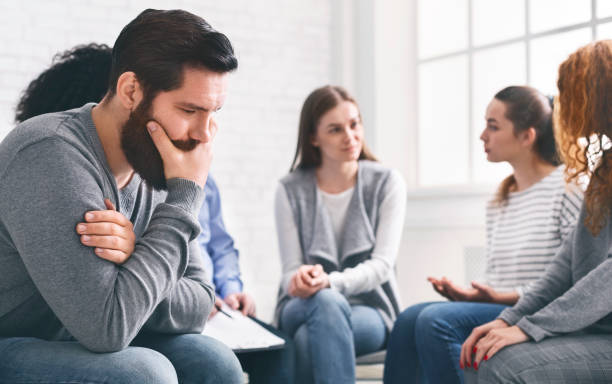Social anxiety disorder, also known as social phobia, is a mental health condition characterized by excessive fear and anxiety in social situations. It is often accompanied by physical symptoms such as rapid heartbeat, blushing, and difficulty speaking.
 According to the Anxiety and Depression Association of America, an estimated 15 million adults in the United States suffer from social anxiety disorder. It is the third most common mental health disorder, behind only depression and alcohol abuse.
According to the Anxiety and Depression Association of America, an estimated 15 million adults in the United States suffer from social anxiety disorder. It is the third most common mental health disorder, behind only depression and alcohol abuse.
People with social anxiety disorder may fear being judged or criticized by others, leading them to avoid social situations altogether. This can lead to isolation and difficulties in maintaining relationships and fulfilling daily responsibilities, such as work or school.
The cause of social anxiety disorder is not fully understood, but it is believed to be a combination of genetic and environmental factors. Those with a family history of anxiety disorders or who have experienced traumatic events may be more at risk for developing social anxiety disorder.
Treatment for social anxiety disorder often includes therapy, medication, or a combination of both. Cognitive-behavioral therapy, which focuses on changing negative thought patterns, is a common form of therapy used to treat social anxiety disorder. Antidepressant medications, such as selective serotonin reuptake inhibitors (SSRIs), can also be effective in reducing symptoms.
It is important for those with social anxiety disorder to seek help from a mental health professional. Left untreated, social anxiety disorder can lead to further mental health issues, such as depression and substance abuse.
Fortunately, there are several methods that can be used to effectively manage and overcome social anxiety disorder.

- Cognitive Behavioral Therapy: Cognitive behavioral therapy (CBT) is a type of psychotherapy that focuses on helping individuals identify and change negative thought patterns and behaviors. Through CBT, individuals can learn how to challenge and replace irrational thoughts with healthier, more positive ones, and learn how to manage their anxiety in social situations.
- Exposure Therapy: Exposure therapy is a form of cognitive behavioral therapy that helps individuals confront their fears in a safe, controlled environment. During exposure therapy, individuals are gradually exposed to the situations that trigger their social anxiety, and can learn how to manage their anxiety in those situations.
- Relaxation Techniques: Relaxation techniques, such as deep breathing, progressive muscle relaxation, and guided imagery, can be used to reduce the physical symptoms of anxiety. Practicing relaxation techniques on a regular basis can help individuals gain control over their physical symptoms and reduce their anxiety in social situations.
- Exercise: Exercise is a great way to reduce stress and improve overall mental health. Engaging in regular physical activity can help individuals increase their self-confidence and reduce their anxiety in social situations.
 It is also crucial for friends and loved ones to be supportive and understanding. Encouraging the individual to seek help and providing a safe and non-judgmental environment can make a significant difference in their recovery.
It is also crucial for friends and loved ones to be supportive and understanding. Encouraging the individual to seek help and providing a safe and non-judgmental environment can make a significant difference in their recovery.
In conclusion, social anxiety disorder is a common and serious mental health condition that requires proper treatment. By seeking help and supporting those with social anxiety disorder, we can help reduce the stigma and improve the lives of those affected.
Sources:
Anxiety and Depression Association of America. (n.d.). Social Anxiety Disorder. Retrieved from https://adaa.org/understanding-anxiety/social-anxiety-disorder
Mayo Clinic. (2018, July 31). Social anxiety disorder. Retrieved from https://www.mayoclinic.org/diseases-conditions/social-anxiety-disorder/symptoms-causes/syc-20353561

